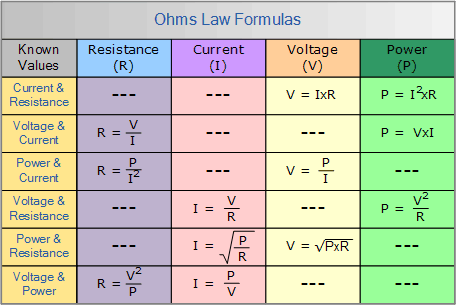we bring your ideas to life

Basics of Electricity
While exploring the world of electricity, it is necessary to understand the basics of Voltage, Current, and Resistance. These are the three basic building blocks required to manipulate and utilize electricity.
Basics of Electricity
While exploring the world of electricity, it is necessary to understand the basics of Voltage, Current, and Resistance. These are the three basic building blocks required to manipulate and utilize electricity.
These concepts can be difficult to understand as one cannot see them. One cannot see with the naked eye the electricity flowing through a wire or the voltage of a battery. We require measuring instruments like, a multi-meter, spectrum analyzer, and oscilloscope to visualize it.
However, let us have a basic understanding of Voltage, Current, and Resistance and how the three relate to each other.
What is Voltage?
Voltage is a measure of the difference in electrical energy between two points of a circuit. Voltage is measured in volts. The symbol for volts is V.
Voltage is also called a “potential difference” and gives us an idea of just how much pushing force an electric field has.
A voltage is the difference in potential between two points in an electric field and is measured in volts.
The voltage is denoted by the capital letter “V”, and the SI unit is “volt”.
To measure voltage between two points, we use a voltmeter.
What is Current?
Current is the amount of electric charge that flows through a specific point in one second and is measured in ampere or amp.
When 1 coulomb of electricity moves past somewhere in 1 second, the current is 1 ampere.
The Current is denoted by the capital letter “I” and the SI unit is ampere or amp, named after French physicist “André-Marie Ampère”
To measure current at one point, we use an ammeter.
What is Resistance?
Resistance (also known as ohmic resistance or electrical resistance) is a measure of the opposition to current flow in an electrical circuit.
Resistance is measured in ohms, symbolized by the Greek letter omega (Ω) and usually denoted by the capital letter “R”.
One unit of resistance is such a resistance that causes 1 ampere current to flow through it when a 1-volt potential difference is applied across the resistance.

The unit of electric resistance that is volt per ampere is called ohm(Ω) after the name of great German physicist George Simon Ohm.
George Ohm found that, at a constant temperature, the electrical current flowing through a fixed linear resistance is directly proportional to the voltage applied across it and inversely proportional to the resistance. This relationship between the Voltage, Current, and Resistance forms the basis of Ohms Law.
What is Ohms Law?
Ohm’s law states that the voltage or potential difference between two points is directly proportional to the current or electricity passing through the resistance, and directly proportional to the resistance of the circuit.
V = I X R
- V = Voltage in volts
- I = Current in amps
- R = Resistance in ohms



Electrical energy is the scientific form of electricity and refers to the flow of charges along a conductor to create energy.
When electrons flow through that potential energy, it turns into electric energy. In most useful circuits, electric energy transforms into some other form of energy.
Electrical power is measured by combining both how much electric energy is transferred, and how fast that transfer happens.
The common symbol for electrical power is the uppercase letter P. The standard unit is the watt, symbolized by W.
In utility circuits, the kilowatt (kW) is often specified; 1 kW = 1000 W.
If the electrical power consumed (or generated) is measured in watts or kilowatts (thousands of watts) and the time is measured in hours not seconds, then the unit of electrical energy will be the kilowatt-hours, (kWh).
1 kWh is the amount of electricity used by a device rated at 1000 watts in one hour and is commonly called “One Unit of Electricity”. This is what is measured by the utility meter and is what we as consumers purchase from our electricity suppliers when we receive our bills.
Electric power consumption by homes and businesses is sold by the kilowatt-hour, which is the running time in hours multiplied by the power in kilowatts. An Energy Meter (kWh meter) is used to measure the amount of power consumption.
Conclusion
In this post, I have walked you through the basics of electricity.
While exploring the world of electricity, you have understood what is Voltage, Current, and Resistance. These are the three basic building blocks required to manipulate and utilize electricity. Electricity is no more a concept for you to switch the button on and the appliance starts to work, switch the button off and it stops.
You have also understood that one cannot see electricity with human eyes and hence it is mysterious, complex, and dangerous. Electricity can hurt you if you touch it.
In this post, I have tried to compile all freely available information on various internet sites, so ultimately you do not need to spend your time searching for it.
In this post, I have tried to compile all freely available information on various internet sites, so ultimately you do not need to spend your time searching for it.
Now next in the series on Power Generation, I will post about How Electrical Power is generated and distributed to bulk users like Industry, domestic, and businesses.
Did you find this blog post helpful?
If so, please share it with your friends and colleagues or share it on Twitter or Facebook. This will help me improve my blog post readership. Thank you!!
Suhas Ghatnekar
The author is an Electrical engineer from the National Institute of Technology Rourkela India, an enterprising techno-commercial professional in the
field of diesel engines and diesel generators.

